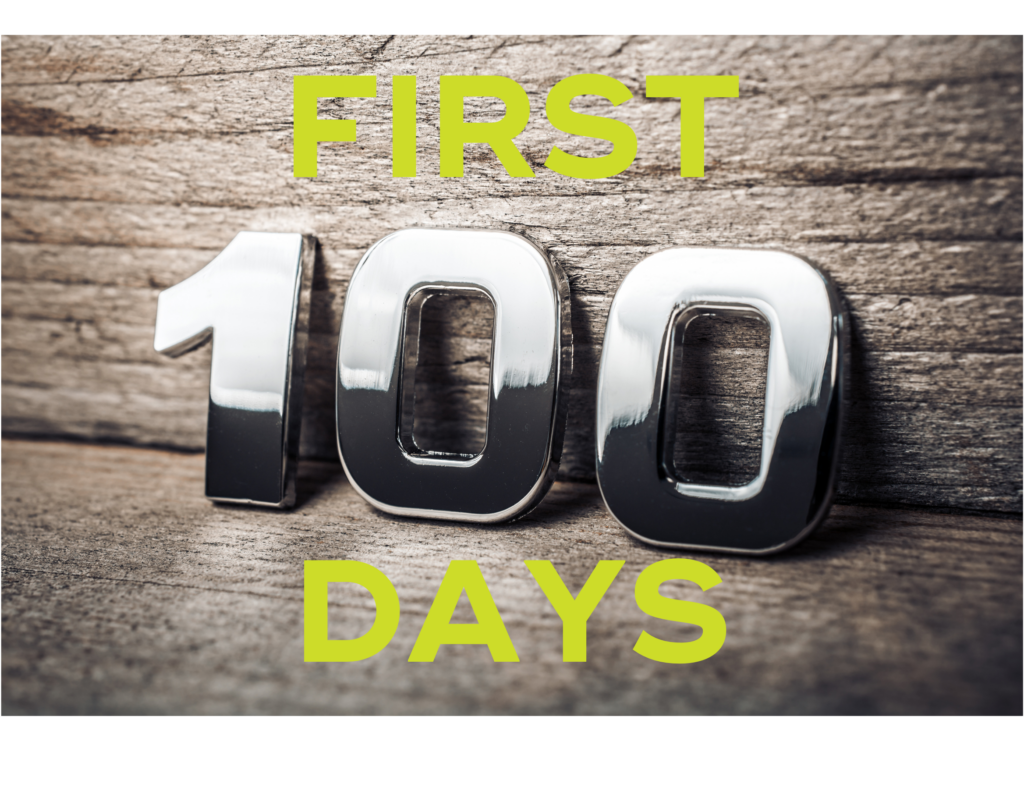VP of Product Marketing: Your 5-Point Plan for the First 100 Days

Congratulations! You’ve just landed your first VP of Product Marketing job and expectations are through the roof. No pressure!
Here’s a 5-point plan for your first 100 days. The objective is to get you playing offense right out of the gate.
The First Thing You’re NOT Going to Do!
The first thing you’re NOT going to do is meet with your team and your peers in sales, corporate marketing, customer success, etc. and solicit their opinions on the positioning of your products. That’ll come later.
At this stage, those opinions are just that, opinions! Although some may have merit, they won’t get you very far because you have no foundation to determine the validity of those opinions.
Bottom line – these meetings have no value to you or your constituents right now, and the resulting to-do list makes you nothing more than a fixer for a lot of tactical product marketing issues.
You’ll be forever playing defense. Not why you signed up for this job!
VP of Product Marketing: Your 5-Point Plan for Playing Offense Out of the Gate
1. Meet With Customers
Schedule a series of 1-hour meetings with 15-20 customers that best represent your target markets. Thanks to zoom meeting, you can knock these out your first few days on the job.
These meetings are NOT to discuss your products. Your objective is to understand the industry dynamics that are driving your customers from the top down and their top operational priorities, especially in areas of their business where your products are relevant.
Even though you’ll be meeting with VPs and Directors, it’ll be hard to keep the conversation away from products. Build 10 minutes into the end of the agenda to hear what customers have to say about your products. It’s always valuable.
Walking into your role with this kind of boots-on-the-ground information means you’re fully prepared for any conversation about positioning with sales, corporate marketing, etc. Plus, it’s your ticket to a portfolio marketing strategy for the next 12-24 months that’s guaranteed to drive more revenue.
2. Create a Portfolio Mission Statement
Using the information from your 15-20 customer conversations, create a customer-facing portfolio mission statement (actually, it’s just a phrase) that reflects the ultimate goals of your portfolio in terms of customer business value.
In other words, what are the most desirable outcomes customers expect from your products and why are they valuable.
3. Meet With Your Team and Your Peers
Now you’re ready to meet with your product marketing team and your peers in marketing, sales, customer success, etc. and solicit their opinions on positioning. But you’re in the driver’s seat playing offense since you have the most current data on the market dynamics and the business priorities of your target customers.
4. Create Your Product Marketing Strategy & Execution Plans
The stage is set to create the product marketing strategy that outlines what you’re going to do, why, and how it’s going to benefit sales, business development, customer success and the rest of the organization, accompanied by high-level execution plans.
Solicit their feedback on your strategy and make sure they’re bought in. The discussion will be far more constructive at this point because you’ve completely changed the complexion of the conversation from a tactical product marketing plan to a strategic market growth plan that’s built on customer outcomes and value.
Remember, salespeople always take the path of least resistance. Sell your plan that lays out that path clearly and succinctly.
Be prepared to keep everyone between the guardrails by constantly reminding them of the most lucrative markets and highest impact value targets and why your team is resourced to all the above.
5. Structure Your Organization for Customer Value
If positioning, marketing and selling quantifiable customer outcomes is going to be the mantra of product marketing, give your organization a hard look and re-align where necessary to ensure its best structured to speak the language of your target customers…at scale.
Instead of aligning your entire team around products, be sure to structure some part of your product marketing organization around the industries you serve (retail, healthcare, banking, etc.) and/or the business disciplines (finance, HR, IT, etc.) where your products play.
The relevance factor is paramount to how you craft your messaging and mobilize it across your sales and marketing channels and platforms.
Your Real Job as VP of Product Marketing
There are a lot of things that go into successfully leading a product marketing function. Superior knowledge of the market/customers and strong leadership skills are top of the heap.
The real job of product marketing though is to make the value of your products easy to understand in layman’s terms and take that story into markets that have the biggest need for the outcomes those products provide.
The easier your value is to understand, the easier it is to sell and the easier it is to buy!
Click here if you want to experience the easiest way to learn product management, product marketing, pre-sales demos and customer success with our unique hands-on learning format. Be sure to check out our Product Management Framework that simplifies everything by making customer outcomes the starting point for building, marketing, selling and delivering strategic value.
Subscribe to The Product Vibe and get great articles like this delivered directly to your inbox.
You might also be interested in:
by John Mansour on May 19, 2022.